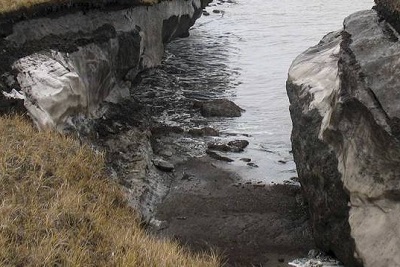London, (Samajweekly) Ancient pathogens that escape from melting permafrost have real potential to damage microbial communities and might potentially threaten human health, according to a new study.
The idea that “time-travelling” pathogens trapped in ice or hidden in remote laboratory facilities could break free to cause catastrophic outbreaks has inspired generations of novelists and screenwriters.
While melting glaciers and permafrost are giving many types of dormant microbes the opportunity to re-emerge, the potential threats to human health and the environment posed by these microbes have been difficult to estimate.
In a new study, a team led by Giovanni Strona of the European Commission Joint Research Centre in Brussels, Belgium, quantified the ecological risks posed by these microbes using computer simulations.
The researchers performed artificial evolution experiments where digital virus-like pathogens from the past invade communities of bacteria-like hosts. They compared the effects of invading pathogens on the diversity of host bacteria to diversity in control communities where no invasion occurred.
The team found that in their simulations, the ancient invading pathogens could often survive and evolve in the modern community, and about 3 per cent became dominant.
While most of the dominant invaders had little effect on the composition of the larger community, about 1 per cent of the invaders yielded unpredictable results.
Some caused up to one third of the host species to die out, while others increased diversity by up to 12 per cent compared to the control simulations.
The risks posed by this 1 per cent of released pathogens may seem small, but given the sheer number of ancient microbes regularly released into modern communities, outbreak events still represent a substantial hazard.
The new findings, published in the open-access journal PLOS Computational Biology, suggest that the risks posed by time-travelling pathogens — so far confined to science fiction stories — could in fact be powerful drivers of ecological change and threats to human health.









